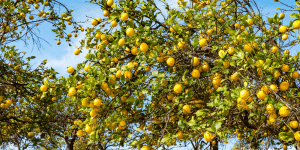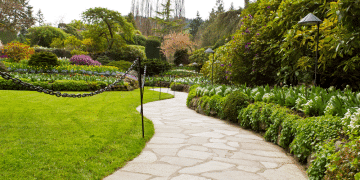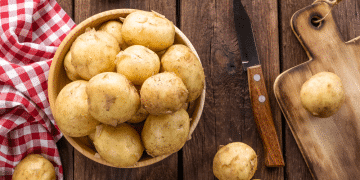Ultimate Guide: When Do Potted Citrus Trees Start Producing Fruit? Expert Tips Reveale
Perfect for Renters and Small Spaces 🍋🏡
Citrus trees are a fantastic option if you’re living in a rental property or have limited space, like a balcony or courtyard.
Their compact nature and adaptability to container growing make them a great fit.
Unlike many other fruit trees, citruses—lemons, limes, kumquats, mandarins, oranges, and native finger limes—thrive in pots, offering both convenience and beauty to your living area. 🌱

Versatile Citrus Varieties 🍊
You have a variety of citrus trees to choose from, all of which grow well in pots.
Whether you prefer zesty lemons, tart limes, sweet kumquats, juicy mandarins, tangy oranges, or the exotic native finger limes, there’s a citrus tree for every taste.
Each of these varieties will flourish when provided with proper care and suitable indoor growing conditions. For example, ensuring the right pot size and providing adequate sunlight are essential.
Delicious and Flavorful Homegrown Citrus 🍊🍋
Homegrown citrus is often richer in flavor compared to store-bought fruit.
When properly maintained, potted citrus trees produce juicy, flavorful fruit that makes all the grooming efforts worthwhile.
Plus, there’s something immensely satisfying about picking fresh fruit right from a tree you’ve nurtured yourself.
Easy Maintenance 🧑🌾
Growing citrus in containers means easy maintenance and mobility.
You can move your pots around to find the best sunlight and protect them from unfavorable weather.
Citrus plants in pots need regular watering and feeding to stay healthy and productive.
Slow-release fertilizers and trace elements—like boron, zinc, copper, iron, and manganese—are crucial for optimal growth and fruit production.
A Gratifying Choice 🌟
Choosing potted citrus trees is a rewarding endeavor, especially for those who appreciate the versatility and delectable fruit these trees can produce.
Given the right care, citrus trees can be highly productive, even in limited spaces.
The Timeline to First Harvest ⏳
Growing your very own potted citrus tree can be immensely rewarding.
Knowing what to expect as your tree matures can help you manage your expectations and give your tree the best care.
Most citrus trees take approximately three years to reach full maturity and produce their first substantial harvest.
The Stages of Growth 🌱
Understanding the different stages of your tree’s growth can help you provide the right care at the right time:
First Year: Childhood Stage 🌱
In the first year, your citrus tree is in its childhood stage. During this period, the tree focuses on root and branch development. To ensure that your tree establishes a strong foundation, it is crucial to remove any initial fruit that appears. While it may be tempting to leave the fruit on, doing so can hinder the tree’s overall growth and delay maturity. Removing the fruit helps the tree concentrate on becoming sturdier and healthier.
Second Year: Teenage Stage 🌿
As your tree enters its second year, it transitions into the teenage stage. In this phase, the tree continues to grow rapidly, developing more branches and increasing in size. It is important to maintain a consistent watering and feeding schedule to support this vigorous growth. Providing your tree with the necessary nutrients during this stage sets the foundation for abundant fruit production in the future.
Third Year: Adult Stage 🌳
By the third year, your tree has reached its adult stage and should be ready to bear its first significant harvest. The care you provided in the earlier stages will now pay off as the tree produces a bountiful crop of juicy and flavorful citrus fruits.
Promoting Early Maturity 🚀
To reap the rewards of your hard work sooner, follow these key practices:
-
Remove Early Fruit: As mentioned, removing any fruit that appears during the first year is essential. This practice encourages the tree to invest energy in establishing strong roots and a robust structure.
-
Provide Adequate Nutrients: Feeding your tree regularly with the right balance of nutrients is vital. Use a slow-release fertilizer every three months and ensure your citrus tree gets trace elements like boron, zinc, copper, iron, and manganese.
-
Ensure Proper Watering: Citrus trees need regular watering to thrive. Be consistent with your watering schedule, making sure the soil remains moist but not waterlogged. 🌱💦
By following these guidelines, you can help your potted citrus tree reach its full potential more quickly, resulting in a generous harvest of delicious fruit.
Next, we’ll explore the differences between dwarf and standard citrus varieties, highlighting how each type impacts both growth and fruit production.
Dwarf vs Standard Varieties 🌿🍊
When it comes to growing citrus trees in pots, choosing between dwarf and standard varieties is a critical decision that can affect the timeline to your first harvest, the maintenance required, and the yield you can expect over the years.
Here’s a closer look at the key differences between these two types.
Dwarf Varieties 🌱
Dwarf citrus trees are a popular choice for small spaces and container gardening.
As you might have guessed, their smaller size makes them ideal for indoor spaces or compact backyards.
One of the significant advantages of dwarf varieties is their faster fruiting time.
Typically, you can expect a dwarf citrus tree to produce fruit within 2-3 years of planting, thanks to their quicker maturation process.
This means you won’t have to wait long to enjoy your first juicy harvest.
Despite their compact nature, dwarf trees can still grow up to 2 meters high. This makes them manageable yet significant enough to add greenery and life to your space.
However, there are some trade-offs to consider.
Dwarf citrus trees have a shorter lifespan, living typically between 10-15 years.
Additionally, while they do produce fruit faster, their overall yield will be smaller compared to standard varieties.
Standard Varieties 🌳
Standard citrus trees, on the other hand, offer different long-term benefits.
These trees take a bit longer to produce fruit, usually around 3 years, aligning with the typical maturation timeline of citrus trees.
However, standard trees boast a significantly longer lifespan of 30-40 years, making them a more enduring choice for those looking to invest in a fruit-bearing plant for the long haul.
The larger size of standard trees, which can grow beyond 2 meters, means they’ll eventually require more space.
They reward this extra space with larger crop yields, both in terms of the number of fruits per tree and in the size of the individual fruits.
This makes standard varieties ideal for those who have the space and are committed to long-term cultivation.
Making the Right Choice 🤔
Choosing between dwarf and standard citrus trees ultimately depends on your specific needs and growing conditions.
If you are a renter or have limited space, a dwarf variety might be the best fit due to its quicker fruiting and manageable size.
Conversely, if you have the room and are looking for a long-term, high-yield investment, standard varieties may be worth the wait.
When making your decision, consider both the short-term and long-term implications—how quickly you want fruit, how much space you can allocate, and how long you hope your tree will produce.
Both dwarf and standard varieties can thrive in pots with the correct care, including regular watering, fertilizing, and repotting, ensuring you get the best out of your citrus tree regardless of the variety you choose.
With these insights into dwarf and standard citrus varieties, you’ll be better equipped to make an informed choice that suits your lifestyle and goals for growing citrus trees. 🌱🍊
Essential Care for Optimal Growth 🌟
Caring for potted citrus trees can be a rewarding endeavor for home gardeners, but it requires attention to detail when it comes to light, water, and nutrition.
Ensuring your citrus plants receive proper care will maximize their growth and fruit production potential while keeping them healthy and vibrant.
Sunlight and Watering 🌅💧
Position your citrus trees in a location where they can bask in full sunlight for at least six to eight hours a day.
Citrus trees are sun-loving plants, and adequate light is crucial for photosynthesis and fruit development.
If you’re growing your trees indoors, consider placing them near a south or west-facing window for optimal light exposure.
Equally important is maintaining a regular watering schedule.
Citrus trees boast a thirst for moisture, yet overwatering can lead to root rot and other complications.
Therefore, it’s essential to water your trees deeply but infrequently, allowing the top layer of soil to dry out between waterings.
Ensure your pots have adequate drainage to prevent water logging.
Fertilization 🌿
Citrus trees are nutrient-demanding plants, so applying a balanced, slow-release fertilizer every three months is critical.
Select fertilizers specifically designed for citrus or use organic options enriched with essential trace elements—boron, zinc, copper, iron, and manganese.
These nutrients will provide steady feeding over time, enhancing fruit quality and overall plant vigor. 🌱
If your plant exhibits stunted growth or pale leaves, a supplementary dose of liquid fertilizer every four to six weeks can give it an extra boost.
However, be cautious not to over-fertilize, as excessive nutrients can harm the plant. 🌿
Repotting 🌿
Citrus trees benefit from repotting every 3-4 years to prevent root-bound conditions and to provide them with fresh potting medium.
Choose a quality potting mix blended with compost and sand to facilitate good aeration and drainage.
Opt for a pot that allows room for root expansion, typically 25% larger than the current size.
When repotting, handling the roots gently is important to minimize transplant shock.
This practice not only supports healthy root growth but also ensures your citrus tree continues to bear delightful and juicy fruits.
Ensuring these essential practices will set your citrus tree on a path of health and productivity.
As we delve deeper into optimizing your citrus care routine, remember that maintaining a watchful eye on seasonal changes can make a significant difference in your tree’s success.
Advanced Growing Tips 🌟
To get the most out of your potted citrus trees, it’s essential to implement advanced growing techniques.
These tips will help maintain healthy trees, encourage maximum fruit production, and shield your plants from common issues.
Pruning for Health and Productivity ✂️
Pruning during the dormant period, typically in late winter or early spring, is crucial to maintaining the health and productivity of your citrus trees.
Regular pruning helps shape the tree, remove dead or diseased branches, and prevent overcrowding, which improves air circulation.
This process not only keeps the tree healthy but also stimulates fruit production later in the growing season.
Renowned horticulturist Cath Manuel recommends consistent pruning to ensure your citrus trees remain active fruit producers throughout their lifetimes.
Companion Planting for Citrus Trees 🌸🍊
| Flower | Benefits for Citrus Trees |
|---|---|
| 🌼 Marigolds | Repel pests like nematodes and aphids, which can harm citrus trees. |
| 🌺 Nasturtiums | Act as a trap crop, attracting pests away from citrus trees and controlling aphids and whiteflies. |
| 🌸 Alyssum | Attract beneficial insects like hoverflies and predatory wasps, which prey on common citrus pests. |
Climate Considerations 🌞❄️
Citrus trees are sun-loving plants that thrive in warm climates.
It’s important to bear in mind that they do not tolerate frost, snow, or extreme cold well.
If you live in an area with harsh winters, consider moving your potted citrus trees indoors or insulating them to protect against cold damage.
Renowned horticulturist Annette McFarlane recommends selecting citrus varieties that suit your local climate and ensuring they receive ample sunlight.
Regular watering and feeding with appropriate nutrients will also promote healthy growth and fruit production.
By following these advanced growing tips, you will help ensure your potted citrus trees remain healthy, productive, and pest-free.
Maintaining optimal conditions will reward you with juicy, flavorful fruits year after year.






